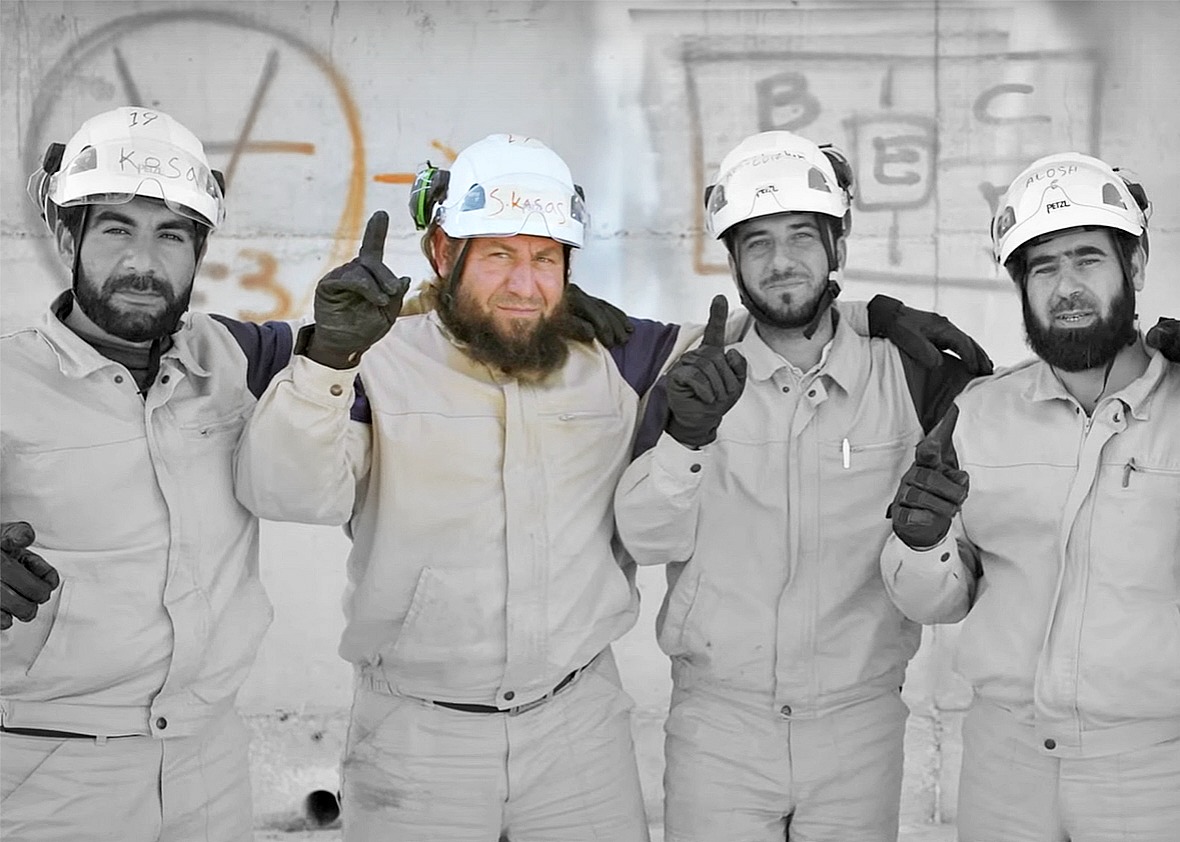The Syrian volunteer rescue workers known as the White Helmets have become the target of an extraordinary disinformation campaign that positions them as an al-Qaida-linked terrorist organisation.
Image may be NSFW.
Clik here to view.
The Guardian has uncovered how this counter-narrative is propagated online by a network of anti-imperialist activists, conspiracy theorists and trolls with the support of the Russian government (which provides military support to the Syrian regime).
The White Helmets, officially known as the Syria Civil Defence, is a humanitarian organisation made up of 3,400 volunteers – former teachers, engineers, tailors and firefighters – who rush to pull people from the rubble when bombs rain down on Syrian civilians. They’ve been credited with saving thousands of civilians during the country’s continuing civil war.
They have also exposed, through first-hand video footage, war crimes including a chemical attack in April. Their work was the subject of an Oscar-winning Netflix documentary and the recipient of two Nobel peace prize nominations.
In spite of this positive international recognition, there’s a counter-narrative pushed by a vocal network of individuals who write for alternative news sites countering the “MSM agenda”. Their views align with the positions of Syria and Russia and attract an enormous online audience, amplified by high-profile alt-right personalities, appearances on Russian state TV and an army of Twitter bots.
The way the Russian propaganda machine has targeted the White Helmets is a neat case study in the prevailing information wars. It exposes just how rumours, conspiracy theories and half-truths bubble to the top of YouTube, Google and Twitter search algorithms.
“This is the heart of Russian propaganda. In the old days they would try and portray the Soviet Union as a model society. Now it’s about confusing every issue with so many narratives that people can’t recognise the truth when they see it,” said David Patrikarakos, author of War in 140 Characters: How Social Media is Reshaping Conflict in the 21st Century
The campaign to discredit the White Helmets started at the same time as Russia staged a military intervention in Syria in September 2015, supporting President Bashar al-Assad’s army with air strikes bombarding opposition-held areas. Almost immediately, Russian state media such as RT and Sputnik started falsely claiming that Isis was the only target and throwing doubt on the bombings of infrastructure and civilian sites.
The same propaganda machine scooped up fringe anti-American activists, bloggers and researchers who believe the White Helmets are terrorists, giving them a platform on state TV and amplifying their articles through social media.
There is no evidence to suggest that these activists and bloggers are knowingly spreading disinformation, although the stories are often thinly sourced.
Scott Lucas, professor of international politics at the University of Birmingham, describes the overall campaign as “agitation propaganda” but said that some of its participants don’t realise they are being used as pawns.
“The most effective propaganda is when you find someone who believes it then give them support – you don’t create them from scratch,” he added.
Why the White Helmets?
The White Helmets play two roles within Syria. The first is their rescue work: providing an ambulance service, fire service and search and rescue in conflict areas where infrastructure has been decimated.
The second role is the documentation of what is taking place within the country via handheld and helmet cameras.
“This is the thing that has annoyed not just the Assad regime and Russian authorities but a lot of the propagandists who work in their orbit,” said Amnesty International’s Kristyan Benedict, a crisis response manager who specialises in Syria.
Their footage has helped organisations like Amnesty and the Syria Justice and Accountability Center corroborate testimony they receive from people in Syria via phone, Skype and WhatsApp. It allows them to check the aftermath of airstrikes to see whether civilians were targeted and whether there was any military presence or checkpoints.
“That’s really been damaging to the war narrative of Syria and Russia,” said Benedict.
Some of the most vocal skeptics of the UN’s investigation include the blogger Vanessa Beeley, the daughter of a former British diplomat who visited Syria for the first time in July 2016; a University of Sydney senior lecturer, Timothy Anderson, who described the April chemical attack as a “hoax”; and Eva Bartlett, a Canadian writer and activist who said the White Helmets staged rescues using recycled victims – a claim that’s been debunked by Snopes and Channel 4 News.
“They are basically excusing the inexcusable,” said Lucas.
“They have a range of websites that will publish whatever nonsense and Russia Today will have them on TV,” he added.
The Russian strategy has been very successful at shaping the online conversation about the White Helmets. By gaming the social media algorithms with a flood of content, boosted by bots, sock puppet accounts and a network of agitators, propagandists are able to create a “manufactured consensus” that gives legitimacy to fringe views. Even Russia’s official channels, such as its UK embassy Twitter accounts, post memes discrediting the organisation.
For more: https://www.theguardian.com/world/2017/dec/18/syria-white-helmets-conspiracy-theories
The post How Syria’s White Helmets became victims of an online propaganda machine appeared first on Islamic News Daily.